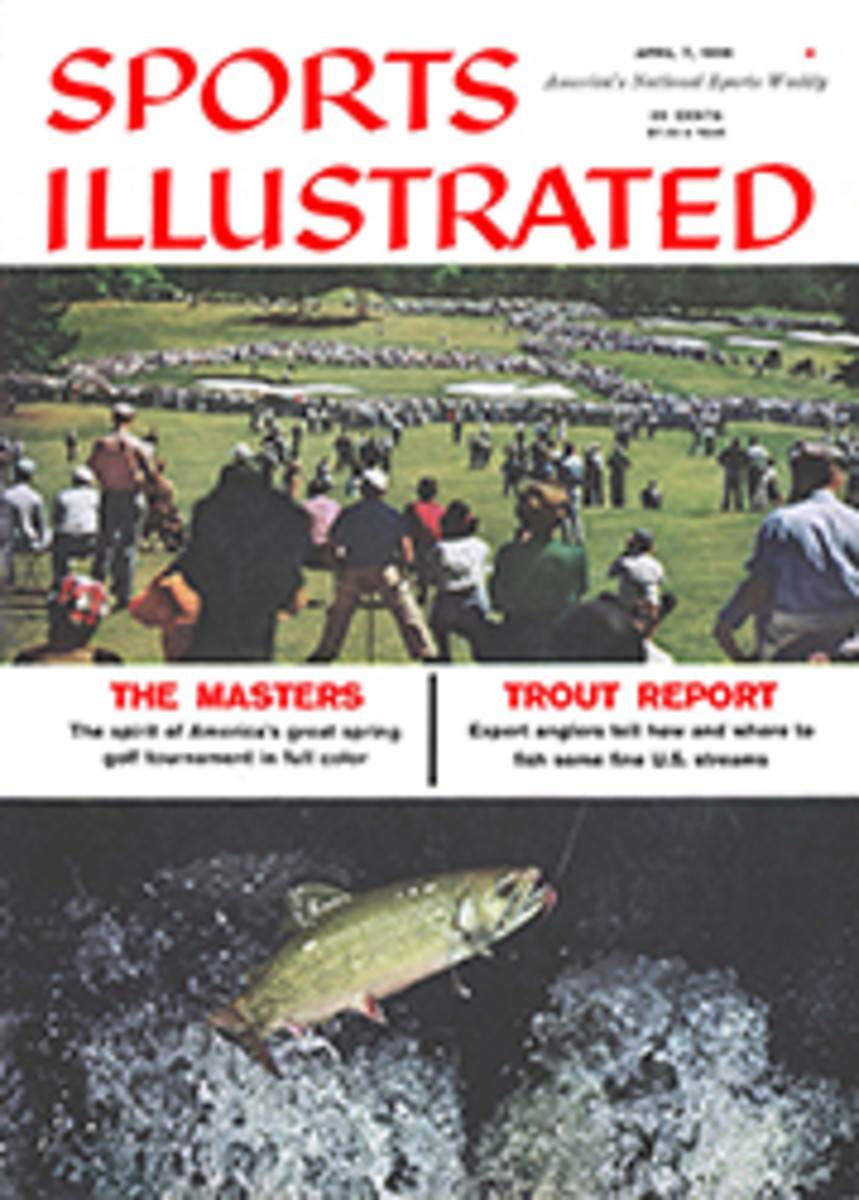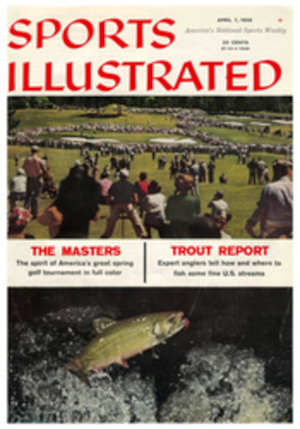
Millionaires and Pros
Lately it has been getting so that it's a rare week in the golfing schedule that we don't find at least one pro-amateur tournament in progress somewhere along the path of the touring professionals, and last week was no exception. The Venturis and Caspers and Finsterwalds and their itinerant fairway friends had three days off between their previous engagement at Fort Lauderdale and their next stop for the Azalea Open at Wilmington, North Carolina, some 700 miles to the north, so on Tuesday and Wednesday they paused at Palm Beach, where $10,000 in walking-around money was waiting.
This was no ordinary pro-am, however; it was the Seminole. Or to be more specific, it was "The Latham R. Reed Amateur-Professional Tournament" at the Seminole Golf Club, one of the flossiest establishments anywhere dedicated to the greater glory of the game. Not only is the Seminole, which was started back in 1937 by the late Latham Reed and Chris Dunphy, one of the granddaddies of the current pro-am craze, along with the Crosby in California (SI, Jan. 13), it rates as a stopover that few of the top pros care to miss despite their natural aversion to spending a couple of days on the links with amateur partners who look a lot more at ease behind the desks in their executive suites. The touring pro would be something less than human if he didn't savor a few hours of palship with people like Henry Ford II or the Duke of Windsor or some of Seminole's dozens of well-entrenched capitalists who make just as much news on the business pages as the pros make on the sports sheets. The Seminole, in short, is the Cadillac El Dorado (or Lincoln Continental, if you will) of pro-am golf. In the words of the song, it has class with a capital K. Where else would you find a tournament where some of the contestants arrive and depart by helicopter so they won't have to buck the traffic for the 12-mile 30-minute drive from home to course?
Although the pro-am formula has minor variations depending on local exigencies, the Seminole arrangement is fairly typical. Each of the 42 pros is assigned two amateur partners, and he plays in a threesome with his two amateurs throughout both 18-hole rounds. In the interest of letting the pros control their own destiny as much as possible, $7,000 of the prize money is split up among them on the basis of their own scores, the other $3,000—beginning with a first prize of $800—goes to the five lowest best-ball scores. The amateurs, of course, get the benefit of their club handicaps, which in the case of the Seminole are revised upward considerably in deference to one of the longest, sandiest, wateriest and windiest links to be found anywhere on this continent.
HOGAN TUNES UP
Last week's event—true to the rather consistent Seminole tradition—brought home some amateur winners and runners-up whose names are certainly not strangers to the public print. Leading on the first day with a best-ball of 61, over a soggy and by no means friendly layout which played every inch of its 6,850 yards, was the team of Tom Nieporte and John R. McLean. That's Jock McLean, son of the famous lady who owned the Hope Diamond and the man who once owned the Cincinnati Enquirer and Washington Post, and himself quite an oil operator out Texas way. What with his generous 13-stroke handicap, McLean was able to help his partner with nine big strokes. Tom Nieporte—well, he's one of the younger pros, who racked up a creditable 70, third behind big George Bayer's 68 and Ben Hogan's 69. (Ben, incidentally, was tuning up meaningfully for the Masters, which was only eight days away.)
On Wednesday the earliest challenge came from Bayer and his partner Winston Guest, one of America's alltime great polo players and now head of an international airline operating out of Mexico. It was somewhat later in the muddy, blowy afternoon that Walter Shirley, a big-time real estate operator out of New York whose 12-stroke handicap belied a fierce middle-aged determination around the greens, showed up with 127. He had given his pro, Roberto de Vicenzo of Argentina, an extraordinary 17 strokes on their best-ball through the two days. Moments later Pro Ted Kroll holed out at the 36th with his partner Chase Morsey Jr. from Detroit. Kroll, with a score of 148 on his own ball, had not been on his game, but he didn't need to be; the tall and handsome Morsey contributed 22 strokes to the cause for a best-ball of 126 and no one seemed about to beat it although half the field was still out.
UNINHIBITED ROAR
But a cliff hanger was in the making. Way at the back of the pack in the next-to-last threesome was Julius Boros playing with James J. Secor, the man who staged the fine 1957 Open at Toledo, and Spencer T. Olin, better known for Olin Mathieson than for athletics now that he is in his late 50s. Coming to the 18th, a 420-yard par 4 where Olin received a handicap stroke, Boros and Olin needed an eagle 2 on their best-ball for a tie with Morsey and Kroll. Olin, a tall, gray-haired gentleman with a not inconspicuous executive girth, boomed out a tremendous drive right alongside Boros'. With the chips down and knowing it, he pulled a three-iron from his bag and slugged the ball through a nasty crosswind to within four feet of the pin some 200 yards away. Then, as if it were just a Sunday afternoon game with the boys back home in East Alton, Illinois, Olin calmly stepped up and dropped his putt to set off a very un-Palm Beach-like roar from the crowd.
The winning pro was a gray-haired, 43-year-old fellow named Pete Cooper, who runs a golf school in Lakeland, Florida. He had blazed home with a hot 68 to add to his 71 of the previous day for his third Seminole victory of the last four years. "I like this course," Cooper explained, "but you've got to be patient with it. It's awfully long and if you get mad at it, it'll kill you." Hogan had found that out the hard way. Needing only even par on his last three holes to win, he slugged a bit too hard, found some unfamiliar trouble and bogied two of those three holes to end in a second-place tie with Bayer at 140.

